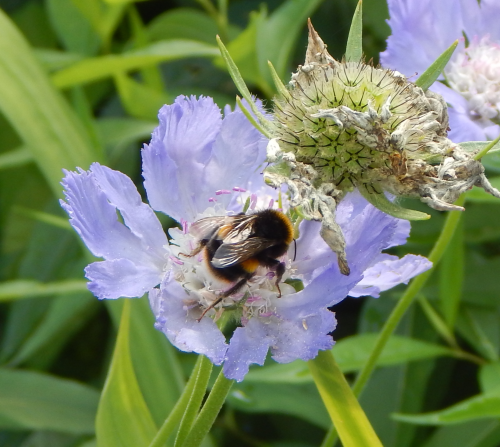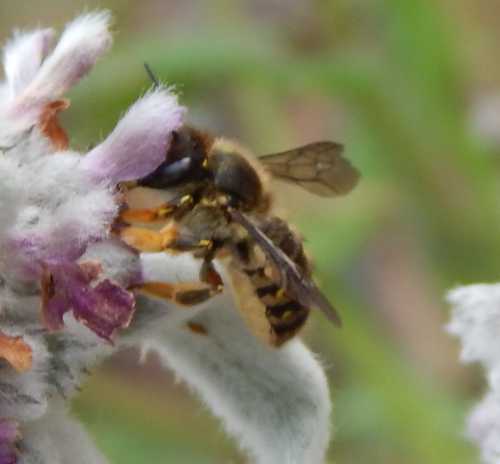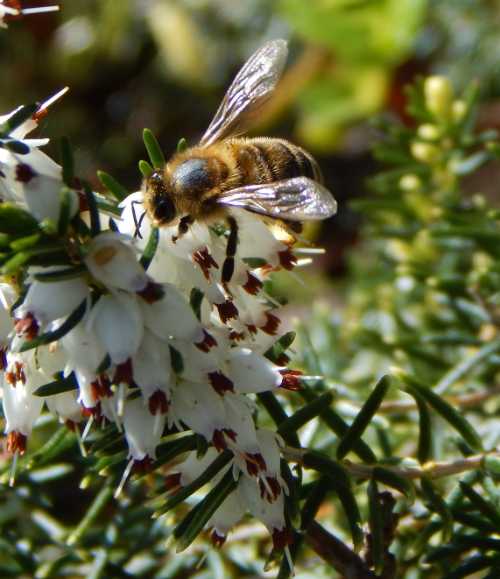Best Bee Plants!
Updated: 29th February 2024
What makes a plant useful to, and popular with bees? Obviously the flowers will be highly melliferous (providing abundant nectar). They may also provide pollen, and preferably they will provide both of these.
Below are lists of plants for bees, including a general list, followed by plants by type.
 Bumble bee on Pin-cushion flower.
Bumble bee on Pin-cushion flower.Lists Of Plants To Make Your Garden Buzz!
Garden Plants for Bees
Links to some lovely plants enjoyed by bees and other pollinators, such as butterflies. A seasonal guide.
Herbs for Bees
Many herbs are great for attracting bees, as well as being useful in the kitchen! Find out which ones are useful in the bee garden!
24 Flowering Shrubs for Bees
Shrubs are often labour saving for humans, but they may also offer efficient foraging opportunities for bees, with many flowers on one plant!
30 Garden Flowers for Bees
Photo guide to all kinds of flowers to help make your garden buzz!
Wildflowers for Bees
Many wildflower habitats have been destroyed due to building development and farming practices. But you can help wildlife by including some in your garden design!
Flower Bulbs For Bees
Bulbs are easy to grow, and versatile for lawns, pots, borders and even problem places, such as shade and drought.
Climbing Plants
Climbers are useful for making use of vertical structures, which can be particularly helpful in small gardens and yards.
Cottage Garden Plants
Offering timeless beauty in the garden, and loved by bees, see this list of popular flowers.
Lawns
Even if you only have a small space, here's how to use that space to encourage bees and other pollinating insects.
Trees, Shrubs and Hedgerows for Bees
Seasonal guide, and how trees, shrubs and hedgerows provide excellent opportunities for wildlife.
Fruit and Vegetables
Fancy growing your own organic fruit & veg? Feed yourself and the bees too!
Plants for Problem Places
Even if you have clay soil, drought or shade, attracting bees is certainly possible!
Gardening for Bees in Small Spaces
Even small spaces can become "feeding stations" for bees"
Other factors to consider when selecting plants for bees
 Wool carder bee foraging on Lamb's ear.
Wool carder bee foraging on Lamb's ear.- Providing nectar and pollen for bees through the seasons.
- Providing a variety of flower shapes.
- Providing plants to attract particular species, such as Lamb's ear for Wool carder bees.
- Growing conditions in your garden.
- How to make best use of available space. See 'Planning a Bee-Friendly Garden'.
- Keep the sprays out of the garden, and include features the bees can make use of, and importantly - create a garden you too can enjoy!
 Honey bee on heather.
Honey bee on heather.More articles about bees and plants
- Bees And Brambles: The Value Of Brambles To Bees Also known as blackberry bush, research shows each bramble flower secretes lots of nectar for bees!
- Bees And Bee Balm Bee Balm (Monarda) - also known as 'Bergamot) is a herbaceous perennial which is attractive for bees.
- 30 Fantastic Garden Flowers For Bees Flowering plant recommendations for the perfect bee garden.
- Bees love lupins – but so do slugs and snails, so what can you do? Here's a way to protect your lupins....using garlic!
- Plant Oregano For Bees (Marjoram) It's rich in nectar, and attracts bees, butterflies and hoverflies in summer. Here's how to plant it.
- Fennel Pollen And Nectar Bees love fennel! How to grow it, gather it, and the many uses of fennel seeds and pollen.
If you found this page helpful or interesting, I'd really be grateful if you would share it with others - if not this page, perhaps another, such as Gardening For Bees.
Thank you so much :) .